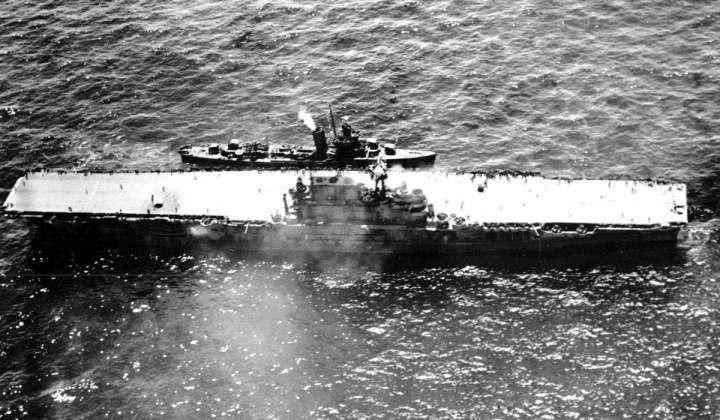British World War II submarine, sunk during mission in 1942, found after 25-year search

A Greek diver has found the HMS Triumph, a British World War II submarine sunk during a mission in 1942, 666 feet underwater in the Aegean Sea.
Researcher Kostas Thoctarides announced the find of the submarine, after 25 years of searching, on the floor of the Aegean on Wednesday.
The HMS Triumph was the third submarine recovered by Mr. Thoctarides in the Aegean. He called the expedition to find it begun in 1998 “the hardest mission I’ve ever undertaken in my life.”
Before the find of the wreck, the HMS Triumph had been declared lost with all hands by the British Admiralty on Jan. 23, 1942 — but the circumstances of its disappearance were unknown.
Upon finding the sunken sub, Mr. Thoctarides and crew were able to discern an idea of what happened. An MK VIII torpedo was still halfway out of its tube after 81 years underwater, with three other fired MK VIII torpedoes being found near the submarine, indicating that the ship was involved in a battle at the time it sank.
Damage near the front of the craft suggested that an explosion there sank the HMS Triumph. The exact cause of the explosion has yet to be determined.
At the time it was found, the submarine was covered in marine life, with a tilt eight degrees to the right. Open periscopes and hatches suggested that it was attempting a deep dive at the moment it was hit and sunk.
On board were 55 crewmen, two commandos, and seven officers, as well as Lieutenant George Atkinson, who worked for British intelligence agency MI9 and for the covert Special Operations Executive army.
A Greek SOE operative, Diamantes Arvanitopoulos, and a New Zealand liaison officer, a Captain Craig, were also aboard. Three of the 67 men were not on the sub when it sank.
The HMS Triumph’s broader objective in the eastern Mediterranean was to ferry trapped Allied soldiers to safety in Alexandria in British-controlled Egypt, and to smuggle operatives into Greece to help the Greek resistance against the Italian and German occupiers.
On Dec. 26, 1941, the HMS Triumph left Alexandria for its 21st and final mission.
On the night of Dec. 29 into the early morning of Dec. 30, the submarine dropped off Atkinson and the other covert operatives in the bay of Despotiko, a small island in the Cyclades island chain.
The agents headed to the nearby island of Antiparos. Atkinson was carrying gold and cash meant to help specific people in German-occupied Athens, radios for communication with Cairo, and something he should not have had — an operations paper containing the aliases of 37 members of the Greek resistance, labeled specifically “do not bring ashore.”
Craig, meanwhile, was meant to help 30 British fugitives hiding out on Antiparos escape. The captain of the submarine, John Huddart, communicated to the fugitives that he would return between Jan. 9 and Jan. 10, after completing patrols.
Atkinson and the others were captured on Antiparos. The 37 Greek resistance members, as well as Atkinson, would be executed by the Germans. The others involved were sent to POW camps.
Meanwhile, the submarine continued its patrol, with the last communication sent out by the HMS Triumph on Jan. 9. At around 11:45 a.m. that day, it unsuccessfully attacked a concrete freighter off of Cape Sounion, sparking the counterattack that doomed the vessel.
An Italian pilot was the last to see the HMS Triumph, sailing about four nautical miles southeast of Cape Sounion.
Mr. Thoctarides would, having puzzled out the details, call the site of the wreckage “a watery grave for 64 heroes that inspires awe,” speaking to Greece’s Athens-Macedonian News Agency.






